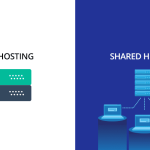In an increasingly interconnected world, server security is more important than ever. Servers are the backbone of web applications, databases, and services that store sensitive data and power the internet. A breach in server security can have devastating consequences, from data theft to service disruptions. In this blog, we’ll explore key strategies and best practices for improving server security to protect your infrastructure and data.
1. Keep Your Software Updated
One of the simplest yet most effective ways to improve server security is to keep all software up to date. This includes the operating system, web server software, databases, and any applications running on the server.
- Patch Management: Regularly apply security patches and updates as soon as they are released. Vulnerabilities in outdated software are often exploited by attackers to gain unauthorized access.
- Automated Updates: Consider enabling automated updates for critical software components. This ensures that your server is protected against known vulnerabilities without manual intervention.
2. Use Strong Authentication Methods
Weak authentication is a common entry point for attackers. Strengthening your authentication mechanisms can significantly reduce the risk of unauthorized access.
- Strong Passwords: Enforce strong password policies that require a combination of uppercase letters, lowercase letters, numbers, and special characters. Avoid using common or easily guessable passwords.
- Multi-Factor Authentication (MFA): Implement MFA to add an extra layer of security. MFA requires users to provide two or more verification factors (e.g., a password and a one-time code) before gaining access to the server.
- SSH Key Authentication: For SSH access, use public key authentication instead of password-based authentication. SSH keys are more secure and less vulnerable to brute-force attacks.
3. Limit Access and Permissions
Minimizing access to your server and restricting permissions can help prevent unauthorized actions and limit the potential damage if an account is compromised.
- Principle of Least Privilege: Grant users and applications only the minimum permissions necessary to perform their tasks. Avoid giving root or administrative privileges unless absolutely necessary.
- Role-Based Access Control (RBAC): Implement RBAC to assign permissions based on roles rather than individual users. This makes it easier to manage permissions and ensures consistency across the server.
- Disable Unnecessary Services: Disable or uninstall services and applications that are not required. This reduces the attack surface and the number of potential entry points for attackers.
4. Secure Remote Access
Remote access is essential for server management, but it also introduces security risks. Implementing secure remote access practices can help protect your server from unauthorized access.
- VPN: Use a Virtual Private Network (VPN) to secure remote connections to your server. A VPN encrypts the traffic between your device and the server, making it harder for attackers to intercept and exploit.
- SSH Best Practices: Configure SSH to listen on a non-standard port and disable root login. Use key-based authentication and restrict SSH access to specific IP addresses or IP ranges.
- Firewall Configuration: Set up a firewall to control incoming and outgoing traffic to your server. Limit access to only trusted IP addresses and block all unnecessary ports.
5. Regularly Monitor and Audit Logs
Monitoring and auditing server logs can help you detect suspicious activity and respond to potential security incidents promptly.
- Log Management: Enable logging for all critical services and regularly review the logs for unusual activity. Look for signs of failed login attempts, unauthorized access, or unusual network traffic.
- Intrusion Detection Systems (IDS): Implement an IDS to monitor your server for signs of malicious activity. An IDS can alert you to potential security breaches, allowing you to take action before any damage is done.
- Automated Alerts: Set up automated alerts for critical events, such as repeated failed login attempts or unexpected changes to system files. This helps you respond quickly to potential threats.
6. Implement Security Enhancements
In addition to basic security practices, consider implementing advanced security enhancements to further protect your server.
- Web Application Firewall (WAF): A WAF helps protect your server from web-based attacks, such as SQL injection and cross-site scripting (XSS). It filters and monitors HTTP traffic between a web application and the internet.
- DDoS Protection: Distributed Denial of Service (DDoS) attacks can overwhelm your server with traffic, causing it to become unresponsive. Use DDoS protection services to mitigate the impact of such attacks.
- SSL/TLS Encryption: Ensure that all data transmitted between your server and clients is encrypted using SSL/TLS. This protects sensitive information from being intercepted by attackers.
7. Backup Regularly and Test Restores
Regular backups are essential for disaster recovery. In the event of a security breach or data loss, having up-to-date backups can save your organization from significant downtime and data loss.
- Automated Backups: Set up automated backups to run regularly, ensuring that you always have a recent copy of your data.
- Offsite Backups: Store backups in a secure, offsite location. This protects your data from being lost due to a physical disaster, such as a fire or flood.
- Test Restores: Regularly test your backup restoration process to ensure that backups can be successfully restored in the event of an emergency.
8. Educate and Train Your Team
Human error is one of the leading causes of security breaches. Educating and training your team on server security best practices can help prevent mistakes that could compromise your server.
- Security Awareness Training: Provide regular security awareness training for all team members. This should cover topics such as phishing, password security, and safe browsing practices.
- Incident Response Planning: Develop and test an incident response plan that outlines how to respond to security incidents. Ensure that all team members understand their roles and responsibilities in the event of a breach.
- Regular Security Reviews: Conduct regular security reviews and audits to identify potential vulnerabilities and ensure that your server security practices are up to date.
Conclusion
Improving server security is an ongoing process that requires vigilance, regular updates, and a proactive approach. By implementing the best practices outlined in this guide, you can significantly reduce the risk of security breaches and protect your server from a wide range of threats. Remember, the cost of securing your server is far less than the potential consequences of a security breach. Make server security a priority to safeguard your data, maintain user trust, and ensure the smooth operation of your online services.







